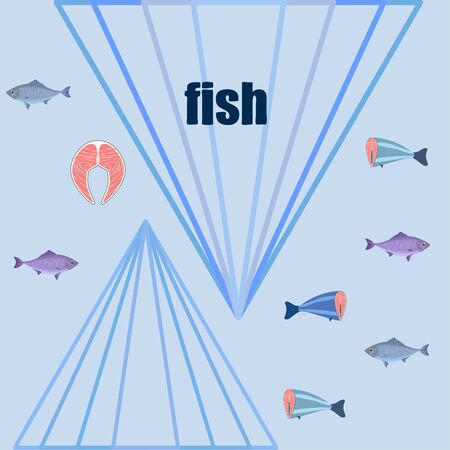1. Understanding Barometric Pressure and Its Measurement
Barometric pressure, also known as atmospheric pressure, is the force exerted by the weight of the air above us. In the United States, its commonly measured in inches of mercury (inHg) or millibars (mb), and weather reports often reference it to indicate changing weather conditions. For anglers, barometric pressure plays a crucial role because it directly affects fish behavior and movement patterns. When pressure rises or falls, it can signal changes in weather that trigger fish to feed or move to different depths. Understanding how to read barometric pressure and interpret its trends allows fishermen to anticipate fish activity more accurately. The table below summarizes key units and their typical values:
| Unit | Typical Value | Common Usage in U.S. |
|---|---|---|
| Inches of Mercury (inHg) | 29.92 inHg (Standard) | Most weather apps & reports |
| Millibars (mb) | 1013 mb (Standard) | Meteorological sources |
Recognizing these measurements and their implications helps anglers make smarter decisions about when and where to fish, ultimately improving their success rates on the water.
2. The Science Behind Pressure Changes and Fish Behavior
Understanding how barometric pressure affects fish starts with basic science. Barometric, or atmospheric, pressure is the weight of the air pressing down on the Earths surface. When this pressure changes—like before a storm or during clear weather—it has a direct impact on aquatic environments and, consequently, on fish physiology and behavior.
How Fish Sense Pressure
Fish possess a swim bladder, an internal gas-filled organ that helps them maintain buoyancy. When the atmospheric pressure drops or rises, the swim bladder responds by expanding or contracting, which can make fish feel uncomfortable or stressed. This leads to noticeable changes in their movement and feeding patterns.
Barometric Pressure Effects on Fish Physiology
| Pressure Condition | Swim Bladder Response | Common Fish Reaction |
|---|---|---|
| High Pressure (Stable Weather) | Swim bladder contracts slightly | Active feeding, predictable movement |
| Falling Pressure (Before Storms) | Swim bladder expands | Lethargic, seek deeper water, reduced feeding |
| Low Pressure (During Storms) | Maximum expansion | Inactivity, shelter seeking, minimal feeding |
Movement Patterns Linked to Pressure Shifts
When the barometric pressure falls quickly—such as right before a thunderstorm—fish tend to become less active and often move to deeper parts of lakes or rivers where they feel safer. Conversely, stable high-pressure conditions encourage fish to feed more aggressively and roam shallower waters. Recognizing these patterns helps anglers choose the best times and locations for successful fishing trips.

3. Typical Fish Reactions to Rising and Falling Pressure
Understanding how North American game fish react to changes in barometric pressure can significantly improve your angling success. Fish are sensitive to pressure fluctuations, which influence their feeding habits, activity levels, and preferred locations within a water body. Below is a breakdown of common responses from popular species when faced with high, low, and rapidly changing pressure systems.
| Fish Species | High Pressure (Stable/Fair Weather) | Low Pressure (Before/During Storms) | Rapidly Changing Pressure |
|---|---|---|---|
| Largemouth Bass | Less active; seek deeper water or heavy cover | More aggressive feeding; move into shallows | Cautious; unpredictable movements |
| Smallmouth Bass | Hold tight to structure; reduced strikes | Increased activity; roam open water | Sporadic bites; may suspend mid-depth |
| Northern Pike | Less likely to chase lures; prefer deeper weed beds | Peak aggression; hunt in shallow flats | Short feeding bursts; then become inactive |
| Walleye | Low activity; stay near bottom structures | Active feeders; move along drop-offs and points | Bites come in flurries, then slow down quickly |
| Panfish (Bluegill, Crappie) | Tight schools near cover; smaller strike zone | Spread out; actively forage on insects and baitfish | Nervous schooling behavior; hesitant to bite |
| Trout (Rainbow/Brown) | Hold deep and sluggish; selective feeding | Surface feeding increases; more visible rises | Erratic movement between depths; less predictable bites |
Key Takeaways:
- High Barometric Pressure: Fish tend to become lethargic and retreat to deeper or sheltered areas, making them harder to catch.
- Low Barometric Pressure: Most game fish increase their feeding activity and are more likely to be found in shallower waters.
- Rapid Pressure Changes: This often leads to unpredictable fish behavior—feeding windows may be short, so anglers should be ready for quick action followed by lulls.
4. Reading Pressure Trends for Better Fishing
Understanding how to track and interpret barometric pressure trends can make a huge difference in your fishing success. Anglers across the U.S. rely on weather apps, portable barometers, and even local news forecasts to monitor shifts in atmospheric pressure before hitting their favorite fishing spots. Here are some practical tips and methods for tracking barometric pressure and using this data to plan your next trip:
Tools for Tracking Barometric Pressure
| Tool | Description | Best For |
|---|---|---|
| Smartphone Weather Apps | Most weather apps provide real-time barometric readings and forecasts. | Quick access and convenience for all anglers. |
| Handheld Barometer | Portable devices that measure current air pressure at your location. | Serious anglers wanting precise, on-site data. |
| Online Weather Services | Websites like NOAA or Weather Underground offer detailed pressure charts. | Trip planning ahead of time from home or office. |
Interpreting Pressure Data for Fishing Success
The key to using barometric pressure is not just knowing the number, but understanding the trend. Is the pressure rising, falling, or staying steady? Each trend can signal different fish behaviors:
| Pressure Trend | What It Means for Fishing |
|---|---|
| Rising Pressure (After a Storm) | Fish may be less active and hold closer to cover. Try slower baits and finesse tactics. |
| Falling Pressure (Before a Storm) | This is prime time! Fish often feed aggressively as pressure drops—use faster-moving lures and cover water quickly. |
| Steady Pressure (Stable Weather) | Fish behavior is more predictable; stick with your go-to techniques for the season. |
Tactical Planning Tips:
- Track trends over several days: Look for patterns rather than isolated readings.
- Combine data with other factors: Water temperature, season, and recent rain can also affect fish movement.
- Adjust your timing: Plan trips around falling or stable pressure for better odds of success.
- Create a fishing log: Record pressure readings alongside catch results to fine-tune your approach over time.
The Bottom Line:
The more you learn to read barometric pressure trends, the more you’ll start to notice how closely your best fishing days line up with specific weather patterns. By integrating these simple tracking practices into your routine, you’ll be ready to make smarter choices—and land more fish—every time you hit the water.
5. Real-World Examples from U.S. Lakes and Rivers
Understanding how barometric pressure influences fish movement is easier when we look at real-life examples from renowned American fishing destinations. Across the United States, anglers have observed noticeable shifts in fish activity tied directly to changes in atmospheric pressure. Here are some notable case studies and anecdotes from popular U.S. lakes and rivers:
Case Study Table: Pressure Effects on Fish Behavior
| Location | Barometric Pressure Trend | Observed Fish Behavior | Angler Outcome |
|---|---|---|---|
| Lake Okeechobee, FL | Rapid drop before storm | Bass moved shallow, increased feeding | High catch rates for largemouth bass |
| Lake Erie, OH/PA/NY | Rising after cold front | Walleye moved deeper, less active | Fewer bites reported by charter captains |
| Columbia River, WA/OR | Stable high pressure | Salmon stayed in deeper pools, sluggish response | Catches slowed until next pressure change |
Anecdotes from the Field
In Minnesotas famed Mille Lacs Lake, local guides often notice that smallmouth bass become aggressive feeders as a low-pressure system approaches, prompting a flurry of successful topwater strikes just hours before rain arrives. Similarly, in Texas Sam Rayburn Reservoir, tournament anglers recount days when a sudden pressure drop triggered a short-lived but intense feeding window for crappie and catfish.
Expert Insight: Local Knowledge Matters
The effect of barometric pressure can vary not only by species but also by regional climate and water type. For instance, guides on Californias Clear Lake report that largemouth bass are particularly sensitive to falling pressure during spring spawn, while trout streams in Colorado show less dramatic fluctuations due to faster-moving waters and more stable mountain climates.
Pro Tip:
If youre planning a trip to any of these hotspots, check local weather trends and talk to experienced locals about how recent pressure changes have influenced catches. This knowledge can help you adapt your strategy for better success.
6. Tips for Adapting Your Tactics to Pressure Changes
Understanding how barometric pressure affects fish movement is only half the battle—the other half is knowing how to adjust your fishing strategy accordingly. Whether you’re fishing a Midwest lake or a southern river, adapting your approach based on current and forecasted pressure can make all the difference. Here are some practical tips on bait selection, depth targeting, and timing to help you maximize your catch in any condition.
Bait Selection Based on Pressure
| Pressure Condition | Bait Type | Recommended Action |
|---|---|---|
| Falling Pressure (Storm Approaching) | Active baits (crankbaits, spinnerbaits, topwater lures) | Fish become more aggressive; use fast-moving lures |
| Stable/High Pressure (Clear Skies) | Natural baits (live worms, minnows) or finesse lures (soft plastics) | Fish are sluggish; slow down presentation and go natural |
| Rising Pressure (After Storm) | Small jigs, subtle presentations | Fish may be finicky; downsize tackle and stay subtle |
Depth Adjustments for Maximum Success
- Low Pressure: Fish often move to shallower water to feed before a front. Target flats, weed lines, and shallow coves.
- High Pressure: After a front passes, fish usually drop into deeper water and seek cover. Focus your efforts near drop-offs, deep structure, or submerged timber.
Timing Your Outing with Pressure Swings
- If you notice pressure dropping rapidly on your weather app or barometer, plan to fish just before the front hits—this is when fish activity typically peaks.
- After a storm when pressure rises quickly, give it time. Fish may need hours—or even a day—to acclimate before returning to normal feeding patterns.
Quick Reference Guide
| Condition | Bait | Depth |
|---|---|---|
| Falling Pressure | Loud/fast-moving lures | Shallow |
| Stable/High Pressure | Naturals/subtle lures | Deep |
| Rising Pressure | Tiny jigs/minnows | Moderate-Deep |
Pro Tip:
If you don’t own a barometer, many smartphone apps offer real-time pressure readings. Pair this info with local fishing reports for best results. By tuning your tactics to the barometer, you’ll fish smarter—and haul in more American trophies season after season!


